Authentic Mexican Flan
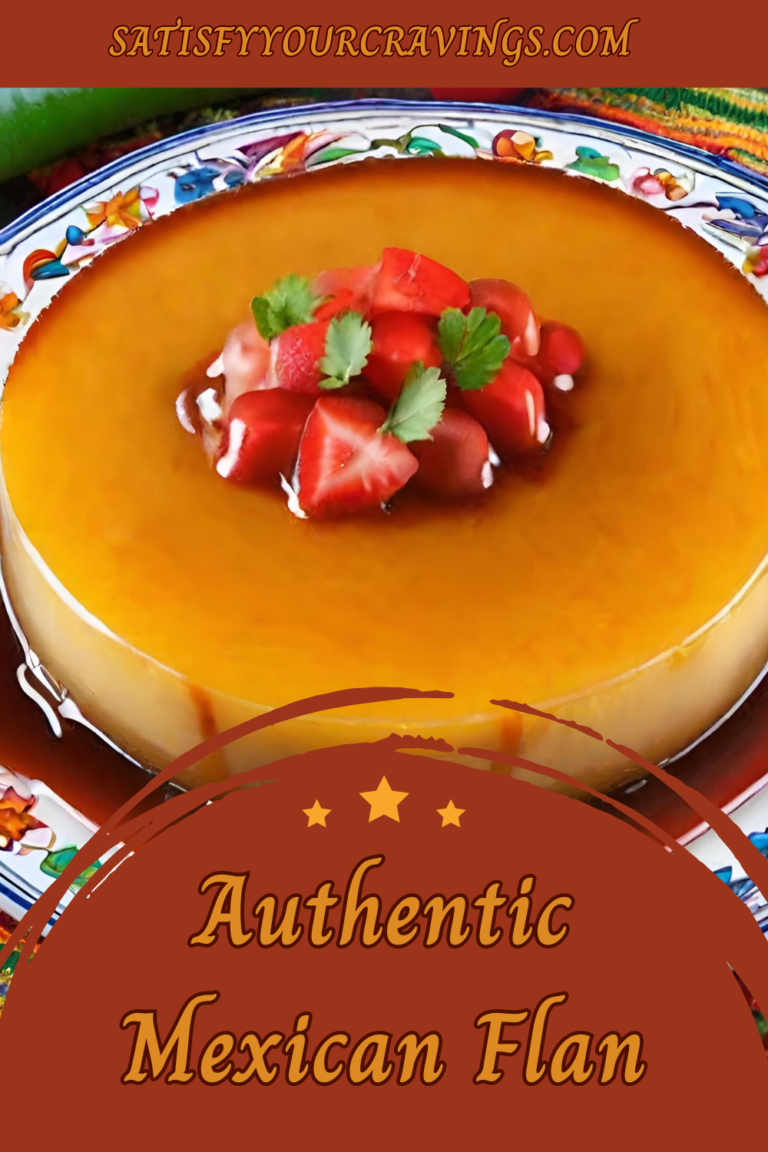
A Classic Dessert with Rich Caramel and Silky Custard
There’s nothing quite like the rich, creamy texture of authentic Mexican flan. This classic dessert is a staple in Mexican cuisine, known for its smooth custard base and glossy caramel topping. The combination of silky vanilla-infused custard and deep amber caramel creates a melt-in-your-mouth experience that’s both simple and indulgent. Whether you’ve had it at a family gathering, a local restaurant, or straight from your abuela’s kitchen, authentic Mexican flan always delivers comfort in every spoonful.
What makes authentic Mexican flan truly special is how effortlessly it comes together with just a handful of ingredients—eggs, milk, sugar, and vanilla. The magic happens when the sugar caramelizes into a rich sauce and the custard is baked to perfection in a gentle water bath. The result? A dessert that’s as elegant as it is easy to make. Whether you’re celebrating a special occasion or just craving something sweet, this authentic Mexican flan recipe will quickly become a favorite in your kitchen.
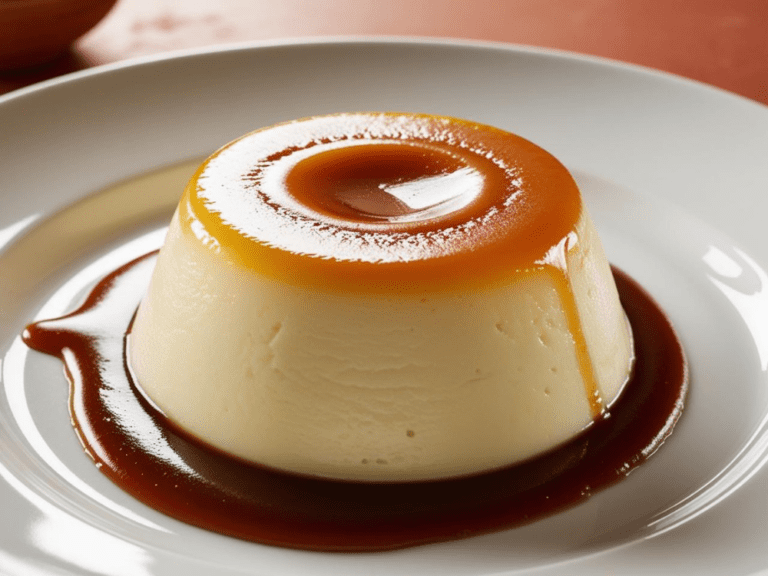
Why You’ll Love This Authentic Mexican Flan Recipe
If you’ve never made authentic Mexican flan at home, you’re in for a treat! This dessert is pure magic—silky smooth custard with a luscious caramel sauce that melts in your mouth. It’s the perfect combination of rich, creamy, and just the right amount of sweetness. Every bite feels indulgent, yet it’s made with simple, everyday ingredients that come together beautifully. Whether you’re a seasoned baker or just starting out, this recipe is incredibly forgiving and easy to master.
One of the best things about authentic Mexican flan is its versatility. It’s a show-stopping dessert for any occasion—whether you’re hosting a dinner party, celebrating a special event, or simply treating yourself. Plus, it’s naturally gluten-free and doesn’t require any fancy equipment. The hardest part? Waiting for it to chill before diving in! The caramelized sugar creates a rich, golden sauce that pairs perfectly with the delicate custard, giving you that perfect balance of flavors. Once you make it, you’ll understand why this timeless dessert has been loved for generations!
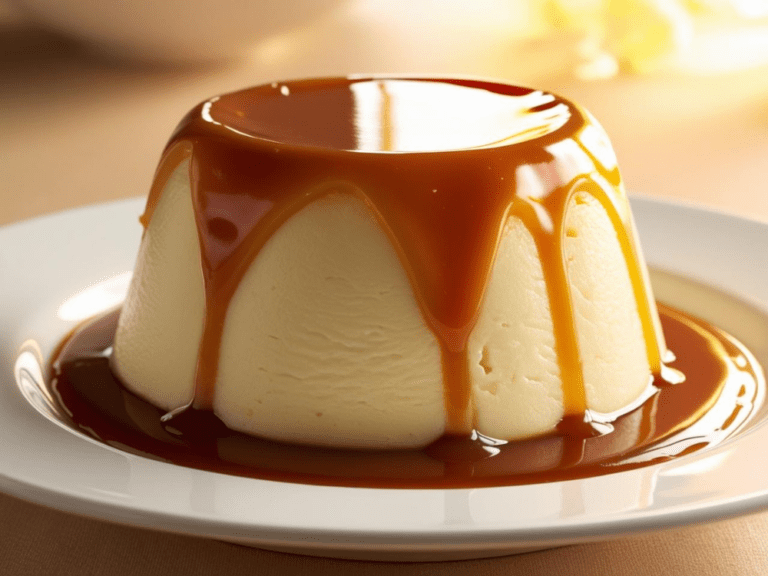
What is Mexican Flan? A Delicious Dessert with a Rich History
Mexican flan is more than just a dessert—it’s a piece of history, a cultural staple, and a comforting sweet treat that has been passed down through generations. This beloved custard-based dish is known for its silky-smooth texture and glossy caramel topping, making it one of the most cherished desserts in Mexico and beyond. But where did it come from, and how did it become such an iconic part of Mexican cuisine? Let’s dive into the story behind authentic Mexican flan and what makes it so special.
The Origins of Flan: A Journey Through Time
While flan is now deeply associated with Mexican cuisine, its origins date back thousands of years to ancient Rome. The Romans were among the first to experiment with eggs and milk, discovering that they could create a smooth, custard-like dish by combining the two and cooking them slowly. This early version of flan wasn’t sweet at first—some versions were even savory!
As the Roman Empire expanded, so did their culinary influence. The recipe for flan made its way to Spain, where it was transformed into a sweet dessert by incorporating sugar and caramel. Over time, Spaniards perfected the dish, creating a version that closely resembles the Mexican flan we know today. When the Spanish colonized Mexico in the 1500s, they brought their cooking techniques, including flan, with them.
How Flan Became a Mexican Staple
Once flan arrived in Mexico, it quickly became a favorite among locals. The dish was embraced by Mexican cooks who added their own flavors and techniques, making it a signature dessert in households across the country. Over time, authentic Mexican flan developed its unique identity, characterized by a rich vanilla custard, a perfectly caramelized sugar topping, and a delicate yet creamy texture.
Mexican families often make flan for special occasions, holidays, and family gatherings. It’s one of those desserts that brings people together—whether it’s served at a Sunday meal, a birthday celebration, or during holidays like Día de los Muertos and Christmas. Its simplicity, combined with its decadent flavor, makes it an irresistible crowd-pleaser.
What Makes Mexican Flan Different from Other Custard Desserts?
Flan is often compared to other custard-based desserts like crème brûlée, panna cotta, and leche flan, but it has some key differences:
- Crème Brûlée – While both are made with eggs, milk, and sugar, crème brûlée has a hard, torched caramelized sugar crust, whereas Mexican flan has a soft, liquid caramel topping.
- Panna Cotta – This Italian dessert is lighter and uses gelatin instead of eggs, giving it a different texture. Flan, on the other hand, relies on eggs for its thick, custard-like consistency.
- Leche Flan (Filipino Flan) – Filipino flan is very similar to Mexican flan but is often denser and richer because it uses more egg yolks and sometimes incorporates condensed milk.
A Beloved Dessert Across Generations
One of the reasons authentic Mexican flan has remained so popular for centuries is its timeless appeal. The combination of simple ingredients, a velvety texture, and a deep caramel flavor creates a dessert that never goes out of style. Plus, it’s incredibly easy to make with just a handful of ingredients, making it accessible to both beginner and experienced cooks.
Whether you’re enjoying flan at a family gathering, in a cozy Mexican restaurant, or making it from scratch in your own kitchen, this dessert carries with it a piece of history and tradition. It’s more than just a sweet treat—it’s a symbol of love, family, and the joy of sharing good food with those who matter most.
Would you like to try making authentic Mexican flan at home? Trust me, once you take your first bite, you’ll understand why this dessert has stood the test of time!
Try some of our other recipes!
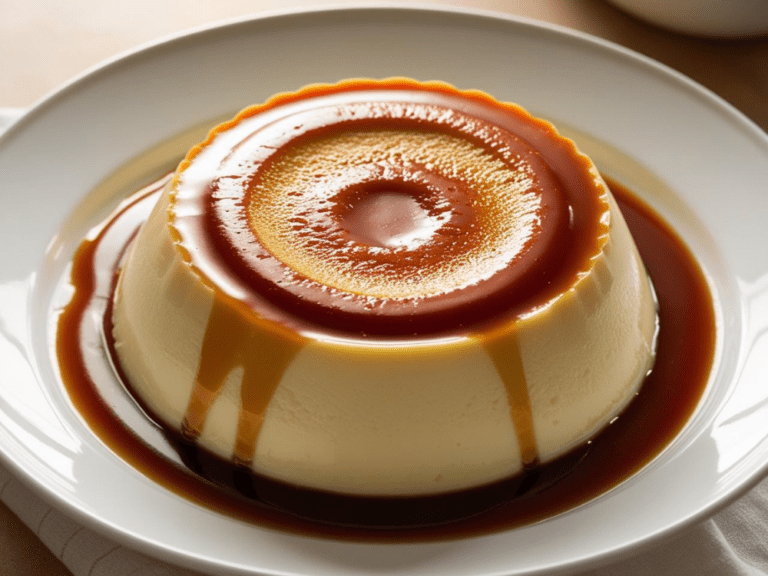
Tips for the Best Authentic Mexican Flan – How to Get It Perfect Every Time
Making authentic Mexican flan is simple, but like any classic dessert, a few small mistakes can lead to a less-than-perfect result. The key to achieving a silky, smooth custard with a rich caramel topping lies in technique and attention to detail. Whether you’re a beginner or have made flan before, these expert tips will help you create the best Mexican flan every time.
1. Mastering the Caramel – The Foundation of a Perfect Flan
The caramel is what gives Mexican flan its signature golden glaze and deep, rich flavor. But getting it just right can be tricky.
✅ Use the Right Pan – A heavy-bottomed saucepan helps distribute heat evenly, preventing sugar from burning.
✅ Melt Sugar Slowly – Heat white granulated sugar over medium-low heat, stirring occasionally. It will gradually melt into a deep amber caramel. Rushing this process with high heat can lead to burnt or bitter caramel.
✅ Swirl, Don’t Stir – Once the sugar starts melting, gently swirl the pan instead of stirring. Stirring can cause the caramel to crystalize, leading to a gritty texture.
✅ Be Quick but Careful – As soon as the caramel turns a golden-brown color, immediately pour it into the baking dish or ramekins. It hardens quickly, so tilt and swirl the dish to evenly coat the bottom before it sets.
✅ Don’t Touch Hot Caramel – Melted sugar gets extremely hot, so be extra cautious while handling it!
2. Achieving the Silkiest Custard
The hallmark of a great authentic Mexican flan is a velvety-smooth custard. Here’s how to get that perfect consistency:
✅ Use Room Temperature Ingredients – Cold eggs and milk don’t mix as smoothly as room temperature ones. Let them sit out for about 15-20 minutes before using.
✅ Blend Gently – Whisk the eggs, milk, and vanilla slowly and gently to avoid incorporating too much air. Air bubbles can create a spongy or bubbly texture instead of the silky smoothness flan is known for.
✅ Strain the Mixture – Pour the custard through a fine-mesh sieve before adding it to the caramel-coated dish. This removes any bits of egg that didn’t fully mix, ensuring an ultra-creamy flan.
✅ Tap Out Air Bubbles – Before baking, gently tap the dish on the counter to bring any trapped air bubbles to the surface.
3. The Water Bath (Bain-Marie) – The Secret to a Creamy Flan
Flan needs gentle, even heat to set properly, and the best way to achieve this is by using a water bath (bain-marie).
✅ Why Use a Water Bath? – A water bath prevents direct heat from curdling the custard, keeping it smooth and creamy. Without it, your flan may turn out rubbery or cracked.
✅ How to Set It Up Properly – Place your flan dish inside a larger baking dish, then pour hot (but not boiling) water into the larger dish until it reaches halfway up the sides of the flan dish. This helps regulate temperature while baking.
✅ Use Warm Water for Even Cooking – If you use cold water, the flan will take longer to cook, and if you use boiling water, it may cook too fast. Hot tap water (about 120°F/50°C) is ideal.
✅ Cover with Foil – Lightly covering the flan with aluminum foil while baking helps prevent the top from browning too much and keeps it moist.
✅ Check for Doneness – The flan is ready when the edges look set but the center still jiggles slightly when gently shaken. Overbaking can make it rubbery and dense, so start checking around 50 minutes into baking.
4. Cooling and Unmolding Without Cracking
The way you cool and unmold your flan can make or break its final appearance.
✅ Cool at Room Temperature First – Let the flan sit at room temperature for at least 30 minutes before refrigerating.
✅ Chill for at Least 4 Hours (Overnight is Best!) – Flan needs time to firm up and fully set, so don’t rush it! Chilling overnight gives the best texture and allows the caramel to fully infuse the custard.
✅ Loosen the Edges First – Before unmolding, run a thin knife or spatula around the edges of the flan to help release it from the dish.
✅ Use Warm Water to Loosen the Caramel – If the flan isn’t releasing, briefly place the bottom of the dish in warm water for about 20 seconds. This melts the caramel slightly, making it easier to flip.
✅ Flip with Confidence – Place a serving plate over the dish, then quickly but gently flip it upside down in one smooth motion. Let it sit for a few seconds so the caramel drips down beautifully.
5. Avoiding Common Flan Mistakes
🚫 Flan is Too Runny – It wasn’t baked long enough. Make sure the edges are set before removing from the oven.
🚫 Flan is Too Firm or Rubbery – It was overbaked. Remember, it should still jiggle in the center when you take it out.
🚫 Caramel is Too Hard – The sugar cooked for too long or got too dark. Next time, remove it from heat as soon as it turns golden brown.
🚫 Caramel is Too Runny – The sugar didn’t melt enough before pouring it into the dish. Let it turn a deep amber color before using.
🚫 Flan Stuck to the Dish – It needs more chilling time, or the caramel didn’t coat the bottom evenly. Try the warm water trick before unmolding.
6. Taking Your Flan to the Next Level – Creative Twists!
Once you’ve mastered authentic Mexican flan, you can have fun experimenting with different flavors and variations!
🍫 Chocolate Flan – Add cocoa powder or melted chocolate for a rich twist.
🥥 Coconut Flan – Swap regular milk for coconut milk for a tropical flavor.
☕ Coffee Flan – Add instant espresso powder for a delicious coffee kick.
🍊 Orange or Citrus Flan – A touch of orange zest can add a bright, citrusy note.
🥃 Boozy Flan – A splash of rum, Kahlúa, or Grand Marnier can elevate the flavors!

The Science Behind Flan – Why Every Step Matters
Flan might seem like a simple dessert—just eggs, milk, sugar, and vanilla—but there’s a lot of science happening behind the scenes to create its silky, creamy texture and perfect caramel topping. If you’ve ever wondered why flan needs a water bath, how eggs work as a thickener, or why your caramel sometimes turns grainy, you’re about to find out! Understanding the science behind authentic Mexican flan will not only help you troubleshoot any issues but also give you the confidence to create a flawless flan every time.
1. How Eggs Transform Liquid Into a Custard
Eggs are the key ingredient that turns a liquid mixture of milk and sugar into a firm but creamy custard. This happens because of a process called coagulation—when proteins in the eggs unfold and bond together as they are heated, thickening the custard.
✅ Why Flan Needs Eggs – Without eggs, flan wouldn’t set properly; it would just be sweetened milk. The proteins in the eggs help trap water molecules, creating a smooth, firm structure while still keeping the flan moist and creamy.
✅ Why You Shouldn’t Overheat the Eggs – If flan is baked at too high a temperature or for too long, the eggs coagulate too much, forcing out moisture and creating a rubbery texture. This is why gentle cooking (with a water bath!) is so important.
✅ Whole Eggs vs. Egg Yolks – Whole eggs contain both whites and yolks, which means they provide structure and firmness. If you add extra egg yolks, the flan will have a richer, creamier texture because yolks contain more fat. Some variations, like Filipino leche flan, use only yolks for an ultra-lush consistency.
2. Why a Water Bath (Bain-Marie) is Essential
Ever wondered why flan is baked in a water bath instead of just being placed directly in the oven? The answer lies in the way gentle, indirect heat helps the custard cook evenly.
✅ Prevents Overheating – Without a water bath, the edges of the flan would cook too quickly, leaving the center undercooked or curdled. The water keeps the temperature low and steady, ensuring a uniform texture.
✅ Stops the Eggs from Curdling – If flan is exposed to direct heat, the eggs can cook too fast, causing them to separate into a lumpy, scrambled egg texture instead of a smooth custard.
✅ Keeps the Caramel from Burning – Because caramel is delicate, placing the flan dish in a water bath helps it stay stable and prevents scorching during baking.
✅ How to Do It Right – Place your flan dish inside a larger baking pan, then pour hot water into the larger pan until it reaches halfway up the sides of the flan dish. Using hot water instead of cold ensures even heating right from the start.
3. The Science of Caramelization – Why Sugar Melts and Changes Color
The caramel layer in authentic Mexican flan comes from a process called caramelization, where sugar is heated until it breaks down into new compounds, creating deep flavors and that signature golden-brown color.
✅ What Happens to Sugar When It Melts? – As sugar heats up, the individual sugar molecules break apart and recombine, forming hundreds of new flavor compounds. This gives caramel its rich, complex taste.
✅ Why Sugar Crystallizes (And How to Prevent It!) – If your caramel turns grainy, it means some of the sugar has re-solidified into crystals. This happens when sugar molecules clump together, instead of melting smoothly.
💡 How to Avoid Grainy Caramel:
- Use clean, dry utensils – Any moisture can cause sugar to crystallize.
- Swirl, don’t stir – Stirring can introduce sugar crystals from the sides of the pan. Instead, gently swirl the pan.
- Use a little acid – Adding a few drops of lemon juice or a splash of vinegar helps prevent crystallization.
✅ Why Does Caramel Harden? – Caramel solidifies as it cools because the melted sugar molecules start to re-bond. When you pour the caramel into your flan mold, it firms up into a glassy layer. Once the flan is baked and chilled, the caramel liquefies again, creating the beautiful sauce that flows over the custard when inverted.
4. Milk and Sugar – The Balance Between Sweetness and Creaminess
Milk and sugar work together to create flan’s signature flavor and texture.
✅ The Role of Sugar – Sugar not only sweetens the custard but also helps it stay soft and creamy by interfering with egg proteins and preventing them from setting too firmly.
✅ Why Evaporated Milk and Condensed Milk Are Common in Flan – Many Mexican flan recipes use a mix of evaporated milk and sweetened condensed milk, which create a thicker, richer texture than regular milk. The reduced water content makes the custard extra smooth.
✅ Can You Make Flan Without Dairy? – Yes! Using coconut milk, almond milk, or oat milk can create a dairy-free flan, but the texture might be slightly different since plant-based milks lack the proteins and fats found in dairy.
5. Why Flan Needs to Chill Before Serving
After baking, flan must chill for several hours—but why?
✅ Allows Custard to Fully Set – The structure of the flan continues to firm up as it cools, making it easier to slice.
✅ Caramel Liquefies Over Time – As the flan sits in the fridge, the moisture from the custard softens the caramel, turning it into a smooth, pourable sauce.
✅ Better Flavor Development – Letting flan rest enhances its flavor, just like with cheesecake or pudding. The vanilla and caramel notes blend together beautifully after chilling.
💡 Pro Tip: Always chill flan for at least 4 hours—overnight is even better!
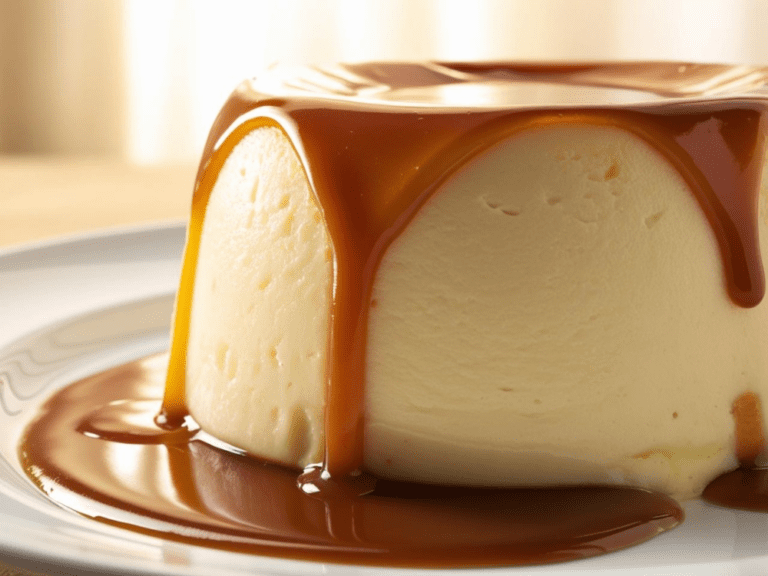
Cooking with Kids: A Fun and Easy Way to Make Flan Together
Cooking with kids can be a messy but rewarding experience, and authentic Mexican flan is a great recipe to make as a family. It’s simple enough for kids to help with, yet exciting because of the magic of caramelization and the transformation of liquid ingredients into a smooth, creamy custard. Plus, the anticipation of flipping the flan and watching the golden caramel cascade down makes for a fun, satisfying moment!
If you’re looking for a way to get your little ones more involved in the kitchen while creating a delicious, homemade dessert, making flan together is a fantastic choice. It teaches kids basic cooking skills, patience, and the joy of sharing a homemade treat. Here’s how to make it a fun, educational, and stress-free experience.
Why Flan is a Great Recipe for Kids
✅ It Uses Simple Ingredients – Eggs, milk, sugar, and vanilla—most of which are already in your kitchen!
✅ It’s a Science Experiment in Disguise – Kids get to see sugar melt into caramel, eggs transform into a smooth custard, and a liquid mixture turn into a solid dessert.
✅ It Encourages Teamwork – There are multiple steps where kids can help, from whisking ingredients to pouring caramel into the dish.
✅ It’s Hands-On But Not Overwhelming – Unlike baking cookies where kids need to handle dough or frosting, making flan is mostly about mixing, pouring, and watching the magic happen!
Kid-Friendly Tasks for Making Flan
While flan does involve hot caramel and baking, there are plenty of safe, kid-friendly tasks that children can do at different ages:
👧 For Toddlers (Ages 2-4)
- Measuring and adding ingredients to the mixing bowl.
- Stirring the milk and sugar together (with supervision).
- Watching the caramel change colors from a safe distance.
👦 For Kids (Ages 5-8)
- Cracking eggs and whisking them into the mixture.
- Pouring the custard into the baking dish.
- Helping set up the water bath by adding water to the larger pan.
👩🍳 For Older Kids & Pre-Teens (Ages 9-12)
- Carefully stirring the caramel as it melts (with supervision).
- Learning how to use a strainer for a smoother custard.
- Assisting with the baking process and setting a timer.
The key is to assign age-appropriate tasks while keeping safety a priority, especially when working with hot caramel or the oven.
How to Make Flan Fun for Kids
🎨 Let Them Get Creative – Allow kids to add their own toppings, like whipped cream, berries, or sprinkles after the flan is done.
⏳ Turn It into a Game – Have kids guess how long it will take for the caramel to turn golden brown or time how long it takes for the custard to set.
🔬 Make It a Science Lesson – Explain how sugar melts into caramel and how eggs help turn liquid into custard. You can even do a fun experiment by baking one flan without a water bath to compare textures!
🥳 Create a Flan Celebration – Make it a tradition to cook flan together for birthdays, holidays, or family gatherings. Let kids take pride in serving their homemade flan to the whole family.
Safety Tips for Cooking Flan with Kids
⚠️ Keep Kids at a Safe Distance When Making Caramel – The sugar gets extremely hot, so only adults should handle this step. Kids can watch from a safe spot and help with the next part.
⚠️ Use Oven Mitts & Supervise – Even older kids need guidance when handling hot baking dishes. Remind them that flan dishes can be hot even after they’re out of the oven.
⚠️ Teach Knife Safety – If an older child is helping loosen the flan from the dish, show them how to safely run a butter knife around the edges.
Making Flan a Special Family Memory
One of the best things about cooking with kids is that it’s not just about the food—it’s about the memories you create together. Imagine your little one, now an adult, remembering how they made flan with you on Sunday afternoons or for special occasions. It’s a beautiful way to pass down a tradition and teach them the joy of cooking.
So, grab your ingredients, gather the family, and get ready to make a delicious authentic Mexican flan—together! The mess will be worth it, and the smiles around the table will make it all the more special.
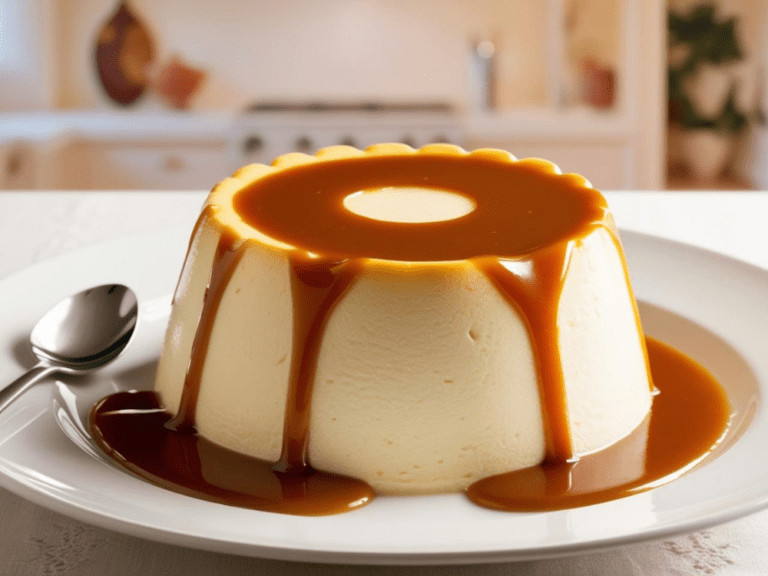
Flan FAQs – Everything You Need to Know About Making the Perfect Flan
If you’ve ever tried making authentic Mexican flan, you probably had a few questions along the way. Why is my flan too runny? Why did my caramel harden too fast? How do I get the perfect silky texture? Don’t worry—you’re not alone! Flan is a simple dessert, but a few small missteps can make a big difference in how it turns out.
To help you master this delicious dessert, I’ve put together a list of the most common flan questions along with expert tips to help you troubleshoot and perfect your technique. Let’s dive in!
1. Why is my flan too runny?
If your flan didn’t set properly and is still jiggly like a liquid after baking, a few things could have gone wrong:
✅ It wasn’t baked long enough – Flan typically takes 50-60 minutes to bake in a water bath at 350°F (175°C). If your flan is still too liquidy, it might need an extra 10-15 minutes.
✅ The water bath wasn’t hot enough – If you used cold water instead of hot for the water bath, the flan will take longer to cook. Always start with hot water.
✅ You didn’t let it chill long enough – Flan needs at least 4 hours in the fridge, but overnight is best. It firms up as it cools, so don’t rush it!
2. Why is my flan too firm or rubbery?
A rubbery flan is usually overcooked, which means the eggs coagulated too much, squeezing out moisture and leaving the texture too dense.
💡 Fix it for next time:
- Bake at a lower temperature (325°F instead of 350°F) for a longer time.
- Check for doneness sooner – Flan is ready when it’s set around the edges but still slightly jiggly in the center.
- Use a water bath – This ensures gentle, even cooking, preventing the eggs from overcooking.
3. Why did my caramel harden too fast?
Caramel cools very quickly, so once it’s ready, you have to work fast to pour it into your mold. If it hardened before you could coat the dish:
✅ Reheat it gently – Place the caramel back on low heat for a few seconds to soften it.
✅ Try adding a bit of water – If your caramel hardened too soon, you can add a teaspoon of warm water and stir to loosen it.
✅ Next time, pour faster – As soon as the caramel turns golden brown, immediately pour and tilt the dish to spread it evenly.
4. How do I prevent my caramel from burning?
Burnt caramel tastes bitter and unpleasant, and once sugar burns, there’s no fixing it. Here’s how to avoid it:
🔥 Use medium-low heat – Cooking sugar too quickly leads to burning. Be patient and let it melt gradually.
👀 Watch it closely – Caramel can go from golden brown to burned in seconds. The moment it turns an amber color, remove it from the heat.
⏳ Don’t overcook it – If the caramel keeps cooking after you remove it from heat, it can burn. Pour it into the mold as soon as it reaches the right color.
5. How do I get my flan out of the mold without breaking it?
Unmolding flan can be tricky, but these tips will help:
🔪 Run a knife around the edges – Gently slide a knife around the edges of the flan to loosen it.
💦 Use warm water – Place the bottom of the mold in warm water for 10-15 seconds to soften the caramel, making it easier to release.
🍽 Flip with confidence – Place a plate over the mold, hold them tightly together, and flip it over quickly in one smooth motion. Let it sit for a few seconds before lifting the mold.
6. Can I make flan without a water bath?
Technically, yes—but I wouldn’t recommend it. Baking flan without a water bath can lead to:
🚫 Uneven cooking – The edges might overcook while the center stays raw.
🚫 A rubbery texture – The custard cooks too fast and loses its silky consistency.
🚫 Cracks in the flan – Without steam from the water bath, flan can dry out and crack.
If you don’t have a deep enough baking dish for a water bath, try placing a separate pan of hot water on the lower rack to create steam.
7. How long does flan need to chill before serving?
Flan must chill for at least 4 hours, but overnight is ideal. Chilling allows the custard to fully set and lets the caramel dissolve into a smooth sauce. If you rush the chilling process, the flan may not hold its shape when unmolded.
💡 Pro tip: If you’re short on time, place the flan in an ice bath for 30 minutes before refrigerating to speed up the cooling process.
8. How do I make flan creamier?
For an extra creamy flan, try these tricks:
🥛 Use evaporated and condensed milk – Many Mexican flan recipes call for both, which add richness and smoothness.
🥚 Use extra egg yolks – More yolks (instead of whole eggs) create a creamier, more custard-like texture.
🥄 Strain the mixture – Pour the custard through a fine-mesh sieve to remove any lumps before baking.
9. Can I make flan ahead of time?
Yes! Flan is one of the best make-ahead desserts because it tastes even better the next day.
✅ Make it 1-2 days ahead – It will keep in the fridge for up to 3 days.
✅ Unmold just before serving – This keeps the caramel fresh and prevents it from drying out.
✅ Store leftovers properly – Keep flan covered with plastic wrap or in an airtight container in the fridge.
10. Can I freeze flan?
Flan is best enjoyed fresh, but you can freeze it for up to 1 month. Keep in mind:
❄️ Texture may change – The custard can become slightly grainy after thawing.
🍮 How to freeze flan – Wrap it tightly in plastic wrap and place it in an airtight container.
⏳ Thawing instructions – Let it defrost in the fridge overnight before serving.
Flan FAQs – Everything You Need to Know About Making the Perfect Flan
Crafting an authentic Mexican flan requires not only the right ingredients but also the proper equipment to ensure a smooth and delightful dessert. Here’s a curated list of essential tools you’ll need, along with top-rated, affordable options available on Amazon:
1. Flan Mold (Flanera) with Lid
A dedicated flan mold ensures even cooking and easy unmolding. Look for stainless steel options with a secure lid to facilitate the traditional bain-marie (water bath) cooking method.
Casita Flanera Original Flan Mold (1.5 Qt Size)
This flan mold is praised for its great quality, ease of use, and locking lid. Customers have noted that it produces delicious puddings and beautiful desserts.
2. Mixing Bowls
A set of durable mixing bowls is essential for combining ingredients smoothly.
Pyrex Sculpted 3-Piece Glass Mixing Bowls
These bowls are versatile, durable, and come in various sizes suitable for different baking needs.
3. Whisk
A good whisk is crucial for achieving a smooth custard mixture.
OXO Good Grips Balloon Whisk
Known for its comfortable handle and sturdy wires, this whisk makes mixing effortless.
4. Fine-Mesh Strainer
To achieve a silky-smooth flan, straining the custard mixture is key.
Cuisinart Fine-Mesh Strainers (Set of 3)
This set offers various sizes, all made of durable stainless steel, perfect for straining custards and sauces.
5. Saucepan
A heavy-bottomed saucepan is necessary for preparing the caramel topping.
Cuisinart Chef’s Classic Stainless Saucepan (1-Quart)
This saucepan provides even heat distribution, crucial for melting sugar without burning.
6. Roasting Pan for Water Bath
A large pan to hold the flanera and water bath ensures even cooking.
Cuisinart Chef’s Classic Stainless Rectangular Roaster
Spacious and durable, this roasting pan is ideal for bain-marie cooking methods.
7. Measuring Cups and Spoons
Accurate measurements are vital for baking success.
U-Taste 18/8 Stainless Steel Measuring Cups and Spoons Set
This set is rust-resistant and features engraved measurements for longevity.
8. Silicone Spatula
A heat-resistant spatula aids in stirring caramel and scraping bowls clean.
DI ORO Seamless Silicone Spatula
Highly rated for its durability and flexibility, making it a kitchen essential.
Investing in these quality tools will not only enhance your flan-making experience but also elevate your overall baking endeavors. Happy baking!
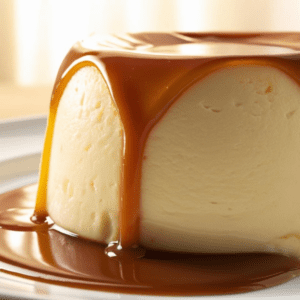
Authentic Mexican Flan
Equipment
- Flanera, 9-inch Round Cake Pan, or Ramekins : The mold where the flan will set. A traditional flanera with a lid is ideal, but a cake pan or individual ramekins also work.
- Heavy-Bottomed Saucepan : Used for caramelizing the sugar evenly without burning.
- Whisk or Blender : For mixing the custard smoothly and preventing air bubbles.
- Fine-Mesh Sieve (Optional but Recommended) : Helps strain the custard to remove any egg bits, ensuring a perfectly smooth texture.
- Large Baking Dish or Roasting Pan : Needed for the water bath (bain-marie) to cook the flan gently and evenly.
- Kettle or Measuring Cup for Hot Water : Used to pour hot water into the baking dish for the water bath.
- Aluminum Foil : Lightly covers the flan while baking, preventing over-browning.
- Knife or Thin Spatula : To run along the edges and help release the flan from the mold.
- Serving Plate with a Slight Lip : Essential for flipping the flan and catching the caramel sauce.
Ingredients
- 1 Cup Sugar (for the caramel)
- 1 Can of evaporated milk (12 oz)
- 1 Can of sweetened condensed milk (14oz)
- 3 Large eggs
- 2 Egg yolks
- 1 Tbsp Vanilla extract
- 1/4 Tsp Salt
Instructions
- Prepare the Caramel:In a medium saucepan, melt the sugar over medium heat, stirring constantly to prevent burning. Once it turns a golden amber color, quickly pour it into a round baking dish, swirling to coat the bottom.
- Mix the Custard:In a blender, combine the evaporated milk, condensed milk, eggs, egg yolks, vanilla, and salt. Blend until the mixture is smooth. Pour this over the caramel in the baking dish.
- Bake the Flan:Preheat your oven to 350°F (175°C). Place the filled baking dish in a larger baking pan and add hot water to the outer pan (about halfway up the sides of the flan dish). Bake for about 50-60 minutes, or until set but still slightly jiggly in the center.
- Cool and Serve:Let the flan cool in the water bath, then refrigerate it for at least 4 hours. To serve, run a knife around the edges of the flan, and invert onto a plate, allowing the caramel to flow over the custard.
Notes
Make-Ahead Tips
✅ Prepare 1-2 Days in Advance : Flan can be made up to 48 hours ahead and stored in the fridge until ready to serve. This makes it a stress-free dessert for parties or special occasions. ✅ Unmold Just Before Serving : Keep the flan in its baking dish until you're ready to serve. The longer it sits, the more the caramel will liquefy, making it easier to release. ✅ Speed Up Cooling if Needed : If you need to serve flan the same day, place it in an ice bath for 30 minutes before transferring it to the fridge to chill faster.How to Store Flan Properly
✅ Refrigerate in an Airtight Container : Once fully cooled, cover the flan tightly with plastic wrap or foil and store it in the refrigerator for up to 3-4 days. ✅ Keep It in the Mold Until Serving : Storing it in the baking dish helps prevent it from drying out and keeps the caramel from spilling. ✅ Separate Slices for Leftovers : If you’ve already unmolded the flan, store any leftover slices in an airtight container with the caramel sauce poured over them to keep them moist.Can You Freeze Flan?
Yes, but freezing flan is not ideal because it can slightly alter the texture. If you need to freeze it: ✅ Wrap It Well : Store flan in an airtight, freezer-safe container or wrap it tightly in plastic wrap and foil to prevent freezer burn. ✅ Freeze for Up to 1 Month : Flan can be frozen for up to 1 month. Beyond that, the texture may become grainy. ✅ Thaw Slowly in the Fridge : Move the frozen flan to the refrigerator and let it thaw overnight before serving. Avoid microwaving, as it can ruin the delicate custard.How Long Does Flan Last?
- In the fridge : 3-4 days
- In the freezer : Up to 1 month

The Magic of Homemade Flan
There’s something truly special about making authentic Mexican flan from scratch. From the moment you melt the sugar into golden caramel to the anticipation of flipping the mold and watching the rich sauce cascade over the silky custard, it’s more than just a dessert—it’s an experience. Whether you’re making it for a special occasion, a family gathering, or just to satisfy a craving, flan has a way of bringing people together.
Cooking is about more than just following a recipe—it’s about creating memories, traditions, and moments of joy with the people we love. Maybe it’s your first time making flan, or maybe it’s a recipe that’s been passed down in your family for generations. Either way, every bite carries warmth, nostalgia, and the comforting flavors of home. So grab your spoon, take that first bite, and savor the magic of homemade Mexican flan—because some of the best things in life are sweet, simple, and made with love. 🍮💛
Have you tried this recipe? I’d love to hear how it turned out! Share your thoughts in the comments below!
Join Now!
Love this recipe? Don’t miss out on even more delicious, healthy, and easy-to-make recipes like this authentic Mexican flan! By joining our email community, you’ll gain access to exclusive content, bonus recipes, and tips to make clean eating a breeze.
Enter your email & click below to subscribe and start receiving tasty inspiration right away. It only takes a minute to join our growing community of food lovers dedicated to making healthy eating delicious and fun.




